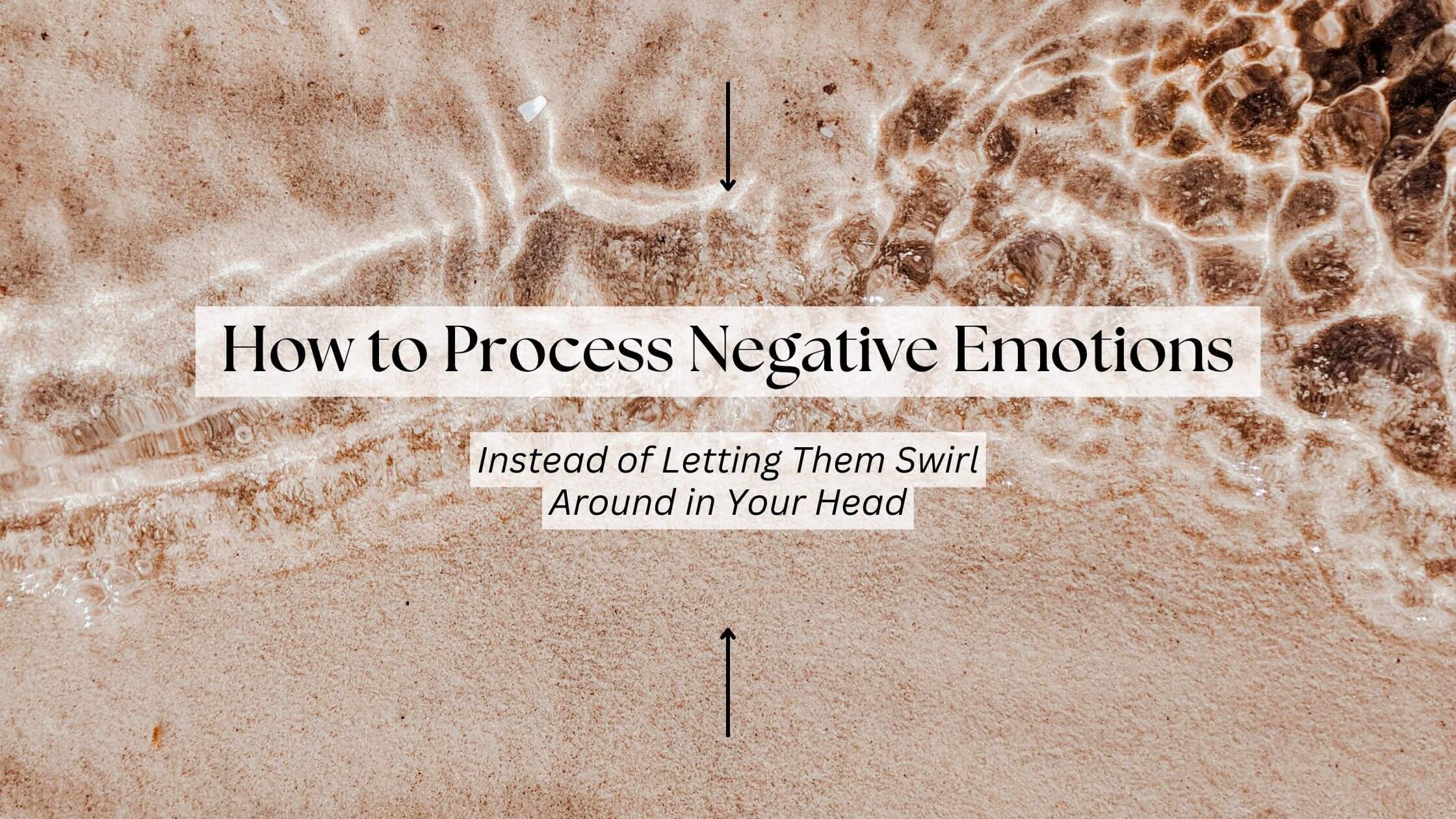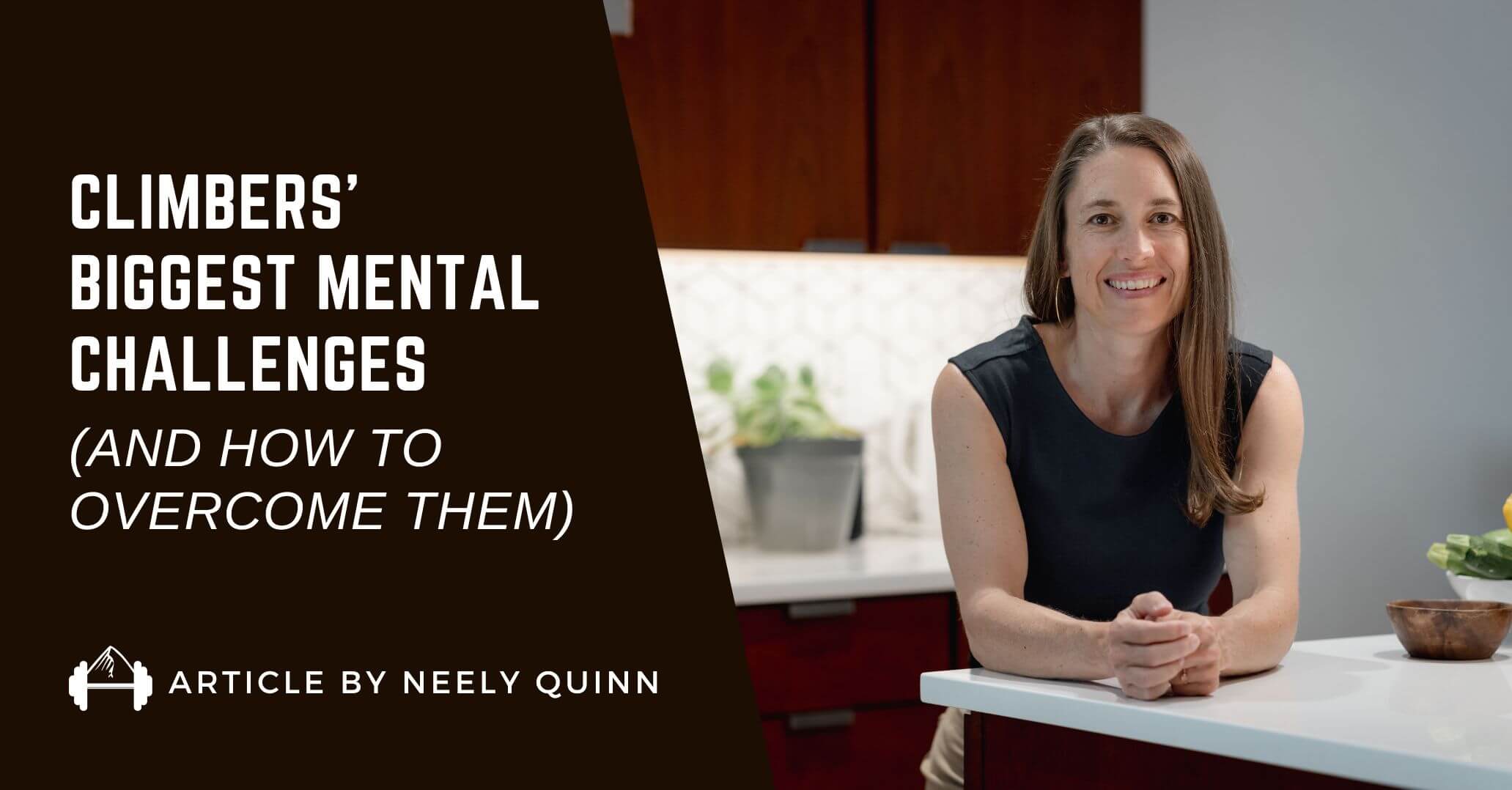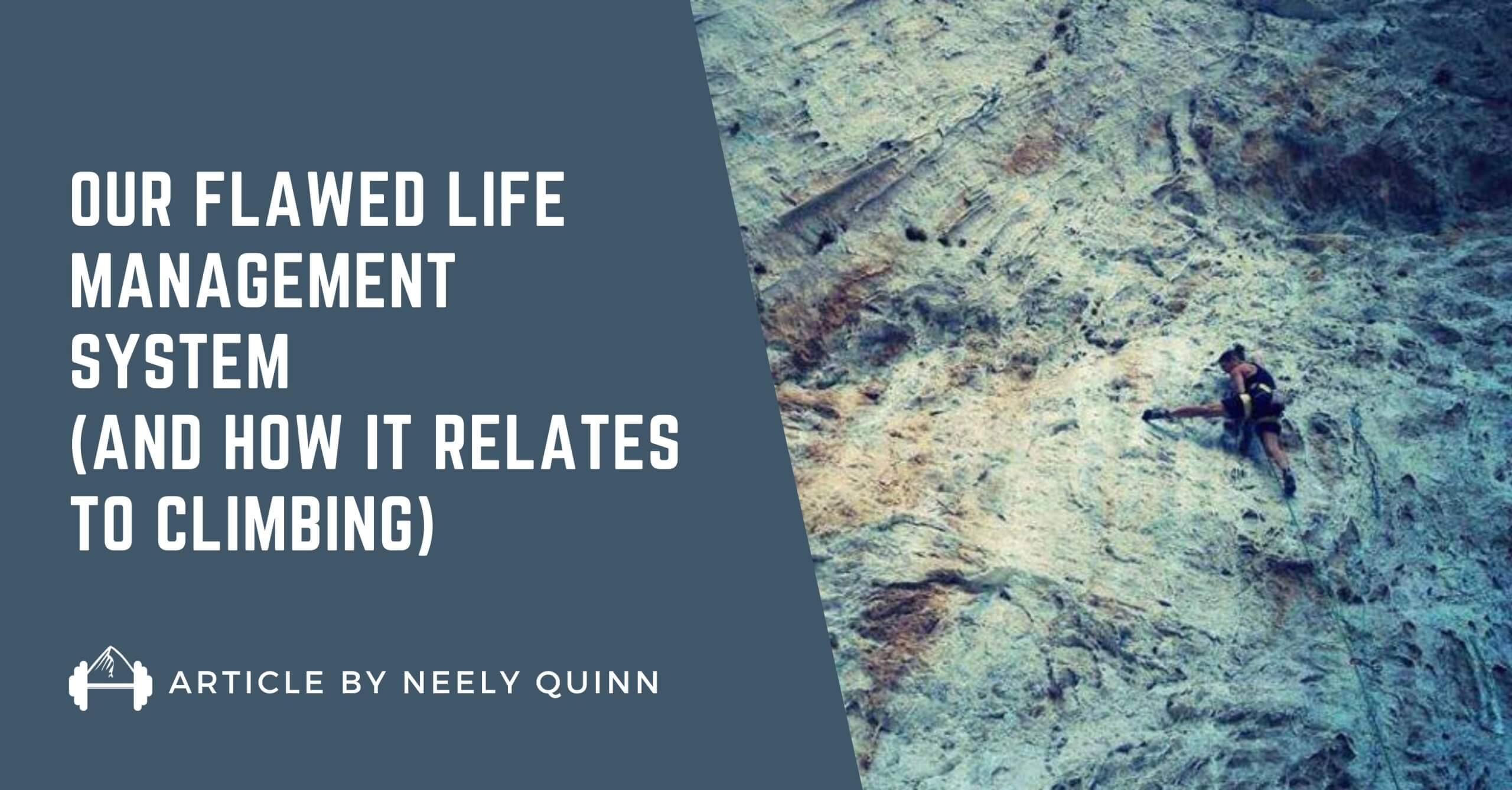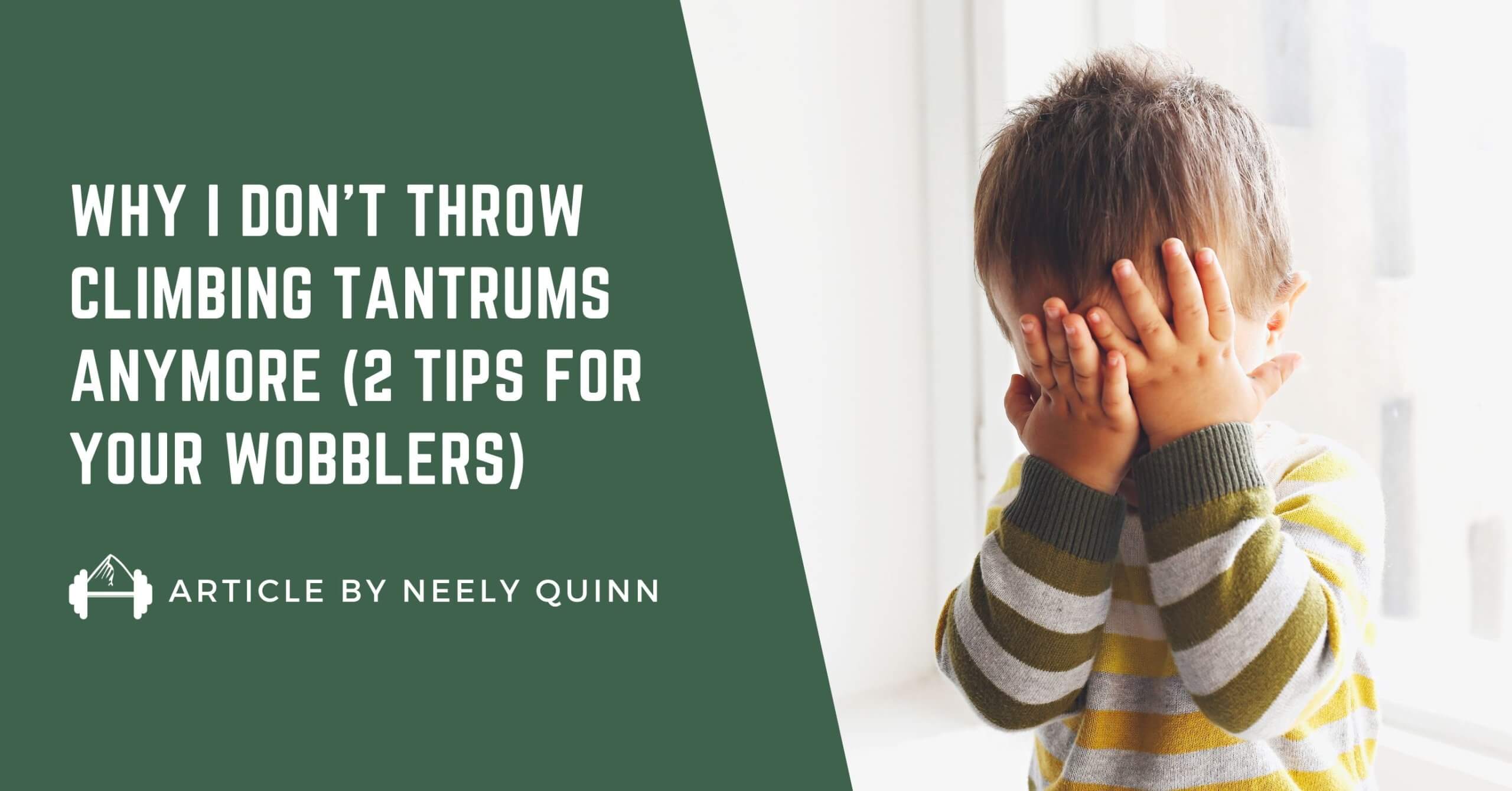My inclination is to retreat when I feel this way. However, I feel like it’s my duty as a public figure and a mindset coach to talk openly about these things, so I’m going to tell you a little bit about why I’m feeling this way and what I’ve been doing to help myself get through it.
The tool I’m going to share with you is one of the foundational strategies I use with my coaching clients, where I teach THEM how to coach themselves so they have tools to use outside of our conversations.
I hope it works for you, too. Here we go.
Why I’ve Been Feeling Low
The reasons I’ve been feeling mildly depressed are that I burned myself out on climbing by going outside too many times on climbs that were beyond my physical limit or climbs that frankly scared the shit out of me. Now I have zero motivation to climb at all.
I also thought I’d finally found a solution to the migraines I experience about 10-12 days a month, but it ended up not working. So the disappointment about that has been pretty profound.
Thirdly, I re-read some old journals from when I was a kid because I was trying to remember something specific, and I came across a detailed account of a sexual assault I experienced when I was 12. Now I’m just sad for my child self, and realizing that it had a much bigger impact on me as an adult than I thought it had.
With ex-pro climber Charlie Barrett being recently convicted of rape and being sentenced to life in prison, I’m also feeling very sad for all of his victims and disappointed by the fact that a lot of pro climbers have supported and defended him throughout his trial, despite his violent, predatory, sociopathic actions.
There are a lot of other things going on right now that are contributing to my melancholy, but those are some of them.
What We Normally Do with Big Emotions
There are plenty of reasons to feel negative emotions – we all have them. And I think the thing that is missing from our culture and the thing that’s making people feel so anxious all the time is that we don’t know what to DO with these emotions.
We just tell ourselves we shouldn’t be having them – that what is happening is not that big of a deal, and that it’s unacceptable to feel these things, much less express them to someone else, and we’re being a big baby. Suck it up.
So then the emotions just fester and build upon each other, swirling in our minds, keeping us awake at night and making us feel dysregulated and insecure in our daily lives.
What We Can Do Instead with Those Big Emotions
I think 5 years ago, before I had the skills to help me deal with this mild depression, it would’ve turned into something bigger. But I spend time every day by myself, in silence, thinking through it all in a productive way.
I take drives and talk to myself. I journal through it. I lie in bed for a little extra time in the morning, all the while just coaching myself, asking big questions and giving myself the space to feel things.
That is what I want for you, too.
Because while I do cry sometimes lately and I feel like a car that’s in Park instead of automatically moving forward in Drive, I do feel like I’m learning a lot and creating new neural pathways and habits. I feel like I’m on the precipice of a new level of tranquility and joy because of all the work I’m doing right now.
Before when I’d feel this way, I’d just wait for it to be over and distract myself with anything I could to get through it. Let’s peel back some layers and learn something, instead.
Here’s how we do it.
The Process
Giving yourself the space to hear your thoughts clearly, name the emotions, validate those thoughts and emotions, tell yourself what you need to hear, and then feel empowered to choose what to do going forward is the sequence I use with myself and my clients as a starting point to process negative emotions.
Here it is written out plain and simple:
- Thoughts – What are the thoughts swirling in your head?
- Emotions – What are the feelings you’re experiencing about those thoughts?
- Validate – Why are those thoughts and feelings reasonable and understandable to have?
- Reassure – What do you need to hear right now that will give you some relief?
- Action – What do you choose to do moving forward?
To explain this further, I’m going to use myself as an example here, and go through my process so you can see how you’d do this on your own.
How I’ve Been Using the Process with My Climbing Burnout
Let’s take the first reason for my mild depression that I listed above: being burnt out on climbing. This is a big one because when I feel burnt out on climbing, it doesn’t just affect whether or not I want to climb:
It affects my work because my work has everything to do with climbing. I’m disinterested in all of it, which is highly unmotivating for work. So I either need to have excitement for climbing or find a different career. Obviously, I’d rather just find my excitement for climbing again…
Here’s how I’m using the process for that one:
Thoughts:
I hate climbing right now. It’s scary, hard, uncomfortable, and pointless. Why have I spent so much of my adult life dedicated to this sport that in the grand scheme of things I’m not even that good at? I don’t want to do it anymore. I’m exhausted. I want to do something more pleasant.
Emotions:
I feel scared that I feel this way – that my motivation is never going to come back and I am so identified as a climber.
I feel ashamed that I tried a route that was really hard for me and spent a bunch of time on it, and got shut down.
And I feel angry at myself for not being braver and just being able to go with the flow like everyone else, even when the “flow” is defying death on runouts to the second bolt of climbs. I’m embarrassed that I seem to be the only one who doesn’t think those death defying runouts are worth it.
Validate:
Yeah, it makes sense that you’d be scared that your motivation for climbing may not come back. You have plans to go to Italy for 3 months this winter to CLIMB, and doing your job well is dependent on your indefatigable passion for climbing.
And I understand why you’d feel ashamed of being shut down by a route you were so excited about – something you were really hoping could be your hardest to date. Sending hard grades is what the climbing community is focused on, and you want acceptance and a feeling of belonging to that community.
And of course you feel angry at yourself for not being braver–or as brave as your climbing partners–because bravery is also highly valued in this community. So much so that the bravest climber among us gets paid millions of dollars just to exist. And again, you want to feel accepted and like you belong in this community, so underneath that anger is fear that you won’t belong anywhere if you’re not as brave as you “should” be.
It’s ok that you feel all of these things – just feel them for a little while.
Reassure:
What I need to hear right now is that I’m doing the best I can with the resources I have, the choices I’ve made, the body I’ve been given, and the person I am. I’m doing the best I can. If I no longer love climbing and don’t want to be associated with it anymore, I don’t have to be and I will still be loved and accepted. And I will be ok and all will be ok.
And even if I don’t do the things I’ve been brainwashed to think I need to do in order to “belong” in the climbing community, it’s ok. I accept myself. I have a sense of belonging with my husband, my best friends, and my family who love me a lot. I belong to myself and I need to be true to myself and what I want for my own life.
Action:
What do I choose to do now? I choose to give myself some space from climbing right now to gain some perspective. I choose to accept that this is where I’m at right now. I’ll do other things with my time, try out some other activities, and nurture other hobbies.
I’ll take it as a much-needed rest period for my body and enjoy the ease and peacefulness of it for now.
How It Feels After the Process
After doing that entire exercise, I feel very grounded and relieved. Like everything will truly be ok and I don’t need to worry about anything. I feel liberated, honestly.
This is the same sentiment I get from my clients when we work through an issue they’re having. It’s that relief and empowerment we’re looking for so that you can stop stewing in the negative emotions.
Stop the Distractions Just for a Bit
The key is to give yourself the time and space to do this, though. It’s really easy to feel a twinge of a bad feeling and then just distract yourself from it with literally anything else: your phone, TV, social time, porn, climbing, exercise in general, excessive work, fighting with your partner, etc.
So stop the distractions just for a bit and take this blog post to a private, safe space where you can really think and cry if you need to. Look at the prompts above and write your answers down or speak them out loud, but either way I recommend you do it alone so you can be completely honest and vulnerable.
Tips to Apply This to Your Own Life
Here are some tips to get the most out of this process:
1. Don’t think of this as dwelling or wallowing in things.
Some people are resistant to this process because they think it’s just giving themselves permission to “feel sorry for themselves.” Well, you ARE indeed feeling things for yourself, but that is actually ok. If you just allow yourself to feel the thing you’re avoiding and give it a face and a name and talk to it, it will then be able to move on.
It’s like a little kid tugging at your shirt saying, “Mom! Mom! Hey, pay attention to me!” and if you ignore it, it just persists. But if you just look down and say, “Oh hey, what do you need from me, little one?” in the most loving way possible, the child typically just shows you a thing or asks a question and then they’re off. Same with this.
2. Talk to yourself as if you’re someone else.
You’ll notice that when I’m talking to myself above, I actually do it in second person, meaning I refer to myself as “you,” and this is really important for me. It allows me to get out of my own head and think of how I might talk to someone ELSE, instead of how I normally talk to myself, which isn’t always the nicest.
It’s way easier to have perspective about someone else’s life than your own, and even this simple grammatical shift can help you get there.
3. Dig a little deeper than you think you need to.
You’ll notice in my example I realized that “underneath that anger is fear” and that felt a lot more authentic when I got there than just the anger. It helped me feel more vulnerable and understand myself better. So especially when anger or frustration comes up, ask yourself what is underneath that emotion.
Final Thoughts
I know this is a heavy thing to talk about, but that’s ok. We need to normalize the fact that we all get bogged down sometimes.
We’re human and we evolved as social creatures whose survival literally hinged on belonging to a group who could provide food, shelter, warmth, and water for us. So it’s not surprising that our anxieties feel like life or death sometimes. Those anxieties often revolve around other people and how we’re perceived by them.
I really hope this is helpful for you, and I’d love to know what your own process looks like if you want to courageously write it out in the comments.
Anb if you want to work through this process with me on any topic you like in a one-on-one coaching session, we can do that.






Leave A Comment